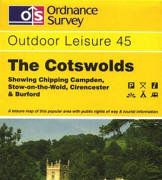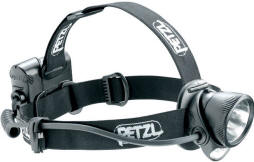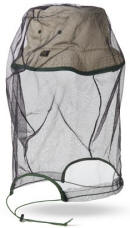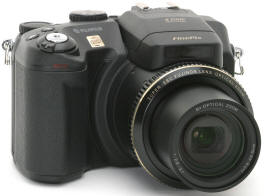Equipment
| Badger Encounters in the Wild book |
![Badger Encounters in the Wild Jim Crumley [Book]](../images/badger_encounters_in_the_wild.jpg) |
Superb
book of Jim Crumley's encounters with badgers in the wild in Scotland. The quality of the writing is superb.
A great read. Click here to buy:
Encounters in the wild
|
Introduction
If you are watching badgers for the first time, it is best to do so
with a recognised Badger Group.
They will know where a sett is and will be able to make sure you are in
place in good time before the badgers come out. Depending on the time of
year (and the badgers!), this may be before nightfall, so you may only
need a good pair of eyes.
If you allow your eyes to get accustomed to the darkness (i.e. at least
20 minutes away from streetlights, car headlights, torches, etc), you may
be surprised just how much you can see "at night". This is
especially true if there is some light in the form of a good-sized clear
moon.
If you plan to do a number of badger watches, keeping an observation
diary is a good idea; as it means you can easily record what times the
badgers emerged; and whether this was later or earlier than normal if it
was wet or windy; or whether they come out at the same time all year or
whether they usually follow sunset times.
Torch
However, you will need to take a reliable torch with you on any
countryside badger watch. Your eyes may get accustomed to the darkness
enough to see the badgers, but on a moonless or cloudy night, you will
need a torch to get back through the woodlands safely.
Hint: Contacting a Badger Group
is also a good idea,
because they may have or know about a hide, from which you may be able
to see badgers in relative warmth and comfort!
CAUTION: It
is very easy to trip or fall over in the woods; or to catch eyes on low
branches or to get completely lost. Take extreme care when venturing out
at night, and try not to go out alone. If you do go alone, make sure
some-one responsible knows exactly where you are...Use of a good map
will help you find your way round, but some-one else should know where
you have gone to.




Insect Repellant
A warm human being sat in the woodland just before dusk can present a
prime source of nourishment for all manner of flying and walking insects.
Whilst there are no mosquitoes in Britain (at the present time), we do have
many other forms of biting or sucking insect - like midges, ticks and so on.


The use of a good insect repellant can deter most of the pesky little
critters from biting exposed skin areas too severely. However some people
are allergic to some insect repellant sprays, and those sprays which contain
high concentrations of DEET are not recommended for long-term use as DEET
may be harmful (especially to children and babies).
Also too, if the badger catches a good whiff of the insect repellant
perfume, it may be alerted to your presence; and end up scuttling off back
down the sett. The best way to avoid this is to remain downwind of the
badgers and their sett entrances. If you stand looking at the sett
entrance and the wind is blowing in your face, you are probably in a
reasonable location.
In some areas of the country, ticks may be a (rare) nuisance. These
will attach themselves to the skin and drink your blood. Unlike midges,
they tend not be as "itchy" until they've drunk a fair amount of
blood, by which time, they can cause an infection. Ticks must be removed
(with a mixture of alcohol/anti-septic and special tweezers), and you must
watch out for symptoms over the next couple of weeks (like weakness,
lethargy, dizziness, muscle pains, etc). The best way to avoid ticks is to
stay out of dense vegetation, and keep legs and arms covered with thick or
strong fabric.
Binoculars/Telescopes
Depending on the sett you visit, you may well be able to close enough
to the main sett entrance to be able to see badgers without the need for
binoculars or telescopes.
If you are unfortunate and the sett entrance is obstructed or hidden, a
pair of binoculars may provide some benefit. The best type are the
cheapest ones (!), with a low magnification and a large lens (such as an
7-by-50 or 10-by-50).
A low magnification is useful as it allows you to keep the whole badger
in view if it comes near you and it makes it easier to track badgers as
they move about.
A large lens is useful as it allows more light to be gathered - making
for a brighter picture through the lens for you to look at.
Cheap binoculars are useful as they may get wet and/or dirty and/or
dropped (you are using them at night in the woods remember).
Long telescopes tend to be less useful, as they tend to gather less
light, and be more difficult to use in silence. However, compact
telescopes/monoculars can sometimes be of some benefit.
Whatever you borrow or buy, remember that badgers have good hearing. If
they hear you fumbling getting your binoculars out of their case or
"rustling" as you lift the binoculars to your eyes, they may
well run straight back down the sett.



Comfort
If you are going to remain in the same place, you will want somewhere
comfortable to sit. A rock or a tree branch is OK for a while, but can
soon feel cold and lumpy. A garden kneeler is usually easy to carry and
lets you kneel or sit as required.
Night Vision Equipment
Night-site equipment is now being used by badger groups, mountain rescue,
animal welfare/rescue and other groups. As well as being able to help see
badgers in conditions of near total darkness, it also has uses to help
watch badger setts (to see whether they are being interfered with), and to
help get back through those dark woodlands in conditions of slightly
better safety.
If you are wondering about buying some Night Vision equipment, ask
at your local badger group. They may have some they could loan to you; or
may have models they can recommend. Either way, you may be able to check
some out without spending the money first.
Otherwise, night vision equipment costs roughly £150 or more - this is
an electronic binocular or monocular which amplifies what little light
there is and shows it to you on an eyepiece. This means you can see
badgers in very dim light (although the picture you see is not a true
daylight-type picture).
Camera
A camera is very useful, and digital ones can sometimes be better than
conventional film ones.
This is because digital cameras can be quieter (no
noisy shutter, motor-drive or film-transport noises), and can often see
very well in poor light - like when it is dusk.
Mobile phones are useful to call for help in an emergency, but the
cameras on them are not often the best for for night-time badger
photography. |


